What I Learned from my Cooking Class in Thailand
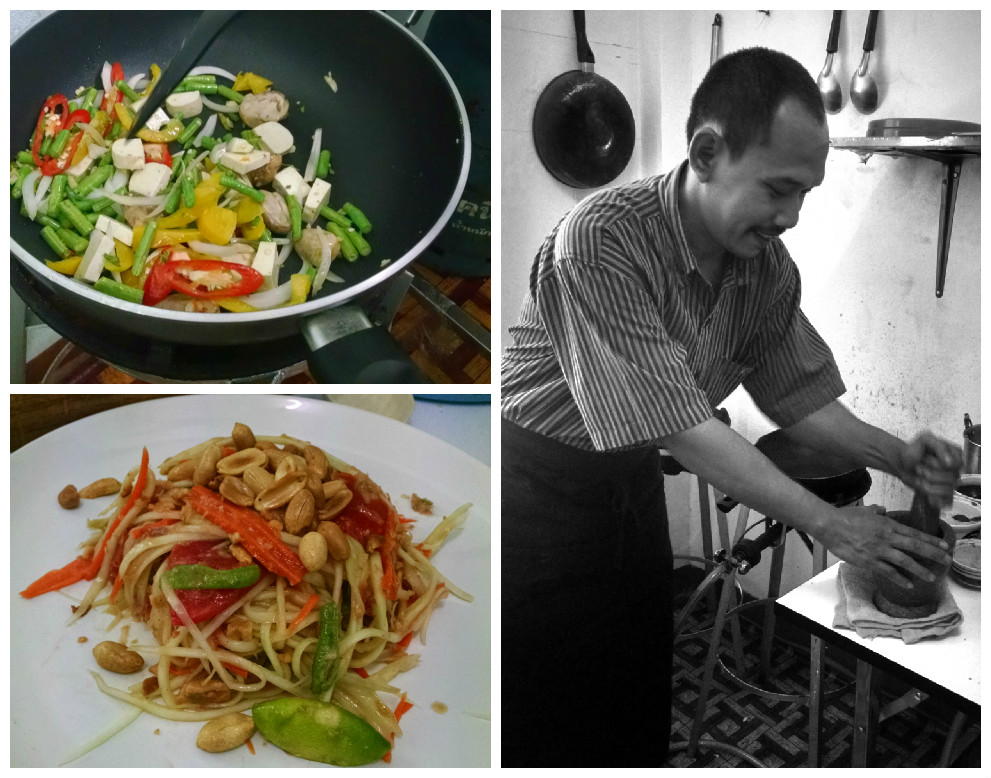
During the exciting and relaxing 6 weeks we spent in Thailand, one of our top priorities was to take a cooking class. Evan and I spent everyday reveling in the flavorful foods Thailand has to offer and wanted to bring home the knowledge of how to make a few of our favorites.
Boy oh boy, was it a whirlwind! Fortunately, we found a class that offered veganized versions of traditional recipes and spent more than three hours absorbing the ways of Thai cooking from our instructor, Golf. We prepped, cooked, pounded, tasted and adjusted in the warm upstairs classroom area of our favorite veg restaurant in Chiang Mai.
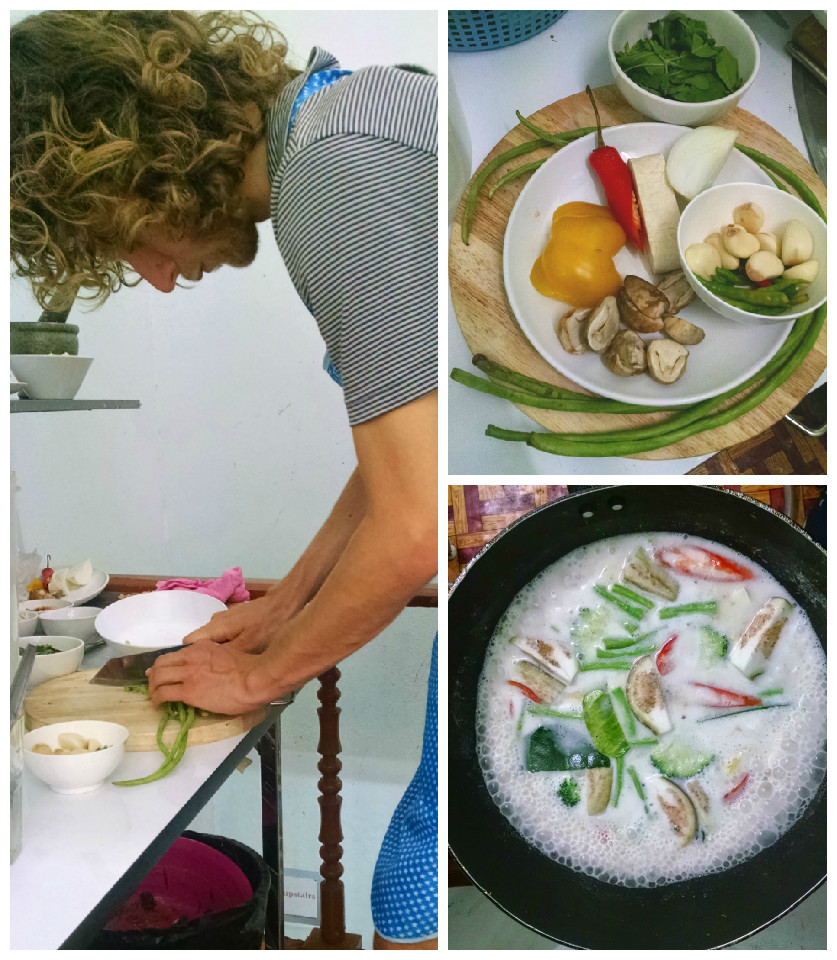
There were several surprises and lots of tips we picked up. Here are a few of the lessons we learned and a bit about our experience along the way.
1. Spice Level x 1 Million
So Evan and I enjoy quite a bit of spice. We learned we could hang with the Indians and felt pretty confident having ordered our meals "spicy" the whole time we were in Thailand. That is, until we got the behind-the-scenes rundown from our instructor who has been a Thai restaurant chef for 6 years.
Note: If you've ever played around with hot chilies you know they vary greatly in their heat level. What we used were the tiny green and red ones, Bird's Eye Chilies, which are approximately 25-100 times hotter than your average jalapeño on the scoville scale.
Okay now that we have that reference point, he told us that when a westerner comes in to his restaurant and orders "medium spicy" he'll add 1 or 2 chilies to the dish. When they order "spicy" he'll give them 3-4. Since we had already established our reputation as able to handle the heat, he chopped up 10 for our stir fry.
Want to know how many he eats if he made the same dish for himself? 50!! I thought he said 15 at first but no... 50. Okay so maybe we can't handle the true Thai heat after all.
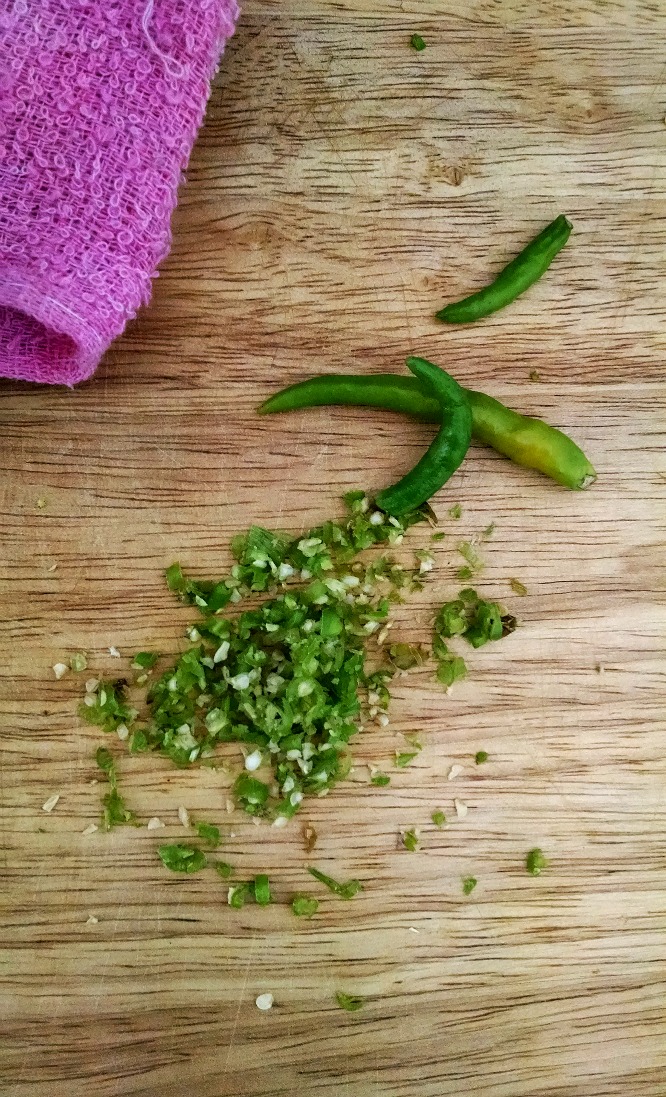
2. Not Many Thais are Vegetarian
When we asked Golf if Thai people were vegetarian he said "not many". This is what we suspected after staying here for several weeks but it was not what we expected beforehand.
Thailand is so rich with amazing tropical fruits, vegetables, herbs and a long history of flavorful cooking that from an outsider’s perspective it seems like such a rewarding place to eat plant-based. But in fact, mostly all Thai food contains some type of meat.
Golf made another interesting comment on this topic. He said that because it gets so hot in Thailand, people eat a lot of meat to have enough protein. Honestly, this didn't make a whole lot of sense to me because to me it feels better to eat lighter when it's hot outside and animal products are very heavy but c'est la vie!
3. The Mortar & Pestle gets Daily Use
Every curry starts with curry paste, and every curry paste gets made in a big mortar and pestle. And guess what, it takes some serious guns to pound those little flavorful pieces of lemongrass, garlic, chilies, lime peel etc. into one cohesive, smooth paste.
I like to think I have some decent arm muscles yet I still had to keep taking breaks or trading off to Evan. Our instructor would occasionally say "harder, harder, here let me show" and taking it out of our hands would completely school us in the art of pounding the pestle, seemingly without effort. Adding insult to injury he kept telling us green curry paste was the easiest to make, lol.
Have you ever bought that Thai curry paste in the little jar from the grocery store? We would keep it on hand in the fridge for about a month. Golf told us most Thais make green curry paste fresh in a mortar and pestle every day because it doesn't stay good beyond that.
This is one of the consistently impressive things we've noticed throughout our Asian travels. Most people eat fresh, from scratch, locally grown meals 3 times a day.
One more note on the mortar and pestle. He did add that you can use a blender, and some vendors do, but that it doesn't taste as good and is not as fresh. I still think it's probably loads better than what we were doing, buying the pre-made, jarred paste, so if I try to recreate this at home I'll probably see how the blender works out.
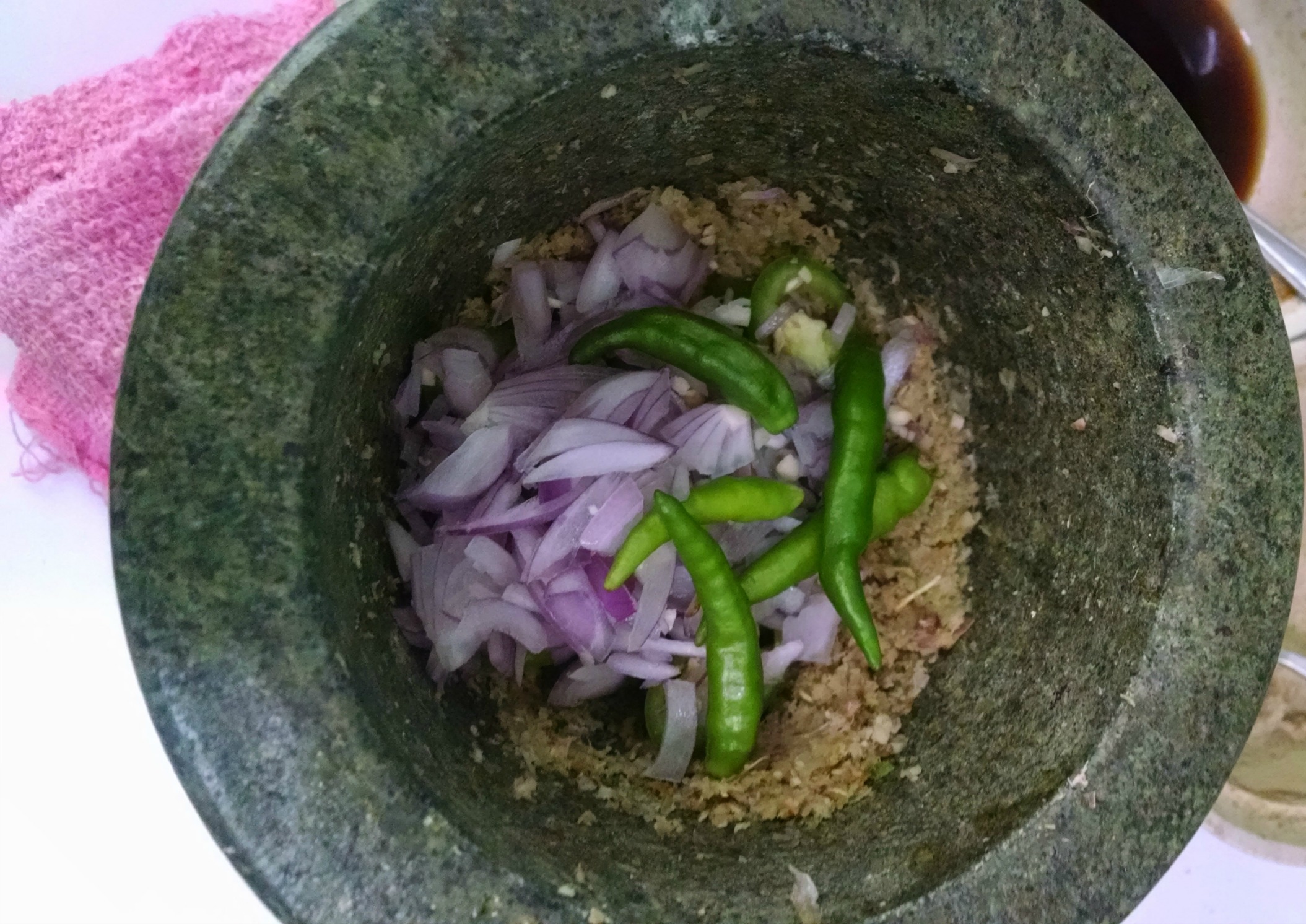
4. High Heat Cookin'
At the beginning of our class, I started us off by frying up some garlic and chilies. Our instructor had set the heat so high I was getting painful little pricks of hot oil on my arms. It's what he referred to as low heat, haha.
At another point during our course I thought Evan was going to have permanently singed arm hair. He was tossing the basil chili stir fry when our instructor came over and turned the heat up so high that the flame literally came up and around the wok, flying about 8 inches into the air.
It was a crucial time in finishing the dish but Evan could barely get his arm over the flames! Scary stuff, that playing with fire is.
I guess it seemed so unusual because at home, we mostly try to cook things a little gentler, but I guess that's the price you pay to get beautifully stir fried veggies.
5. The Holy Trinity of Sour, Sweet & Salty
One thing I love about Thai food is that it’s all about balance. Savory dishes have an undercurrent of sweetness. Sweet desserts have a sour tartness to them. Many strong flavors work together to create an interesting and multi-dimensional effect.
The three star players that must always be in check are sour, sweet and salty. I generally like this approach and I think it will make me think more about “rounding out” flavors even in non-Thai dishes I make.
We did notice though, that many of the local Thai people we interacted with had a major sweet tooth. It’s very hard to escape sugar in Thailand, which for a short-term vacation is fine, but I think when I try to incorporate recipes into my daily life, I’ll try to find a healthier way to achieve that sweetness.
After we finished each of our dishes, our instructor would have all 3 of us taste it for this balance. Evan and I often thought it was complete as is, yet Golf would always think it needed more sugar, hah.
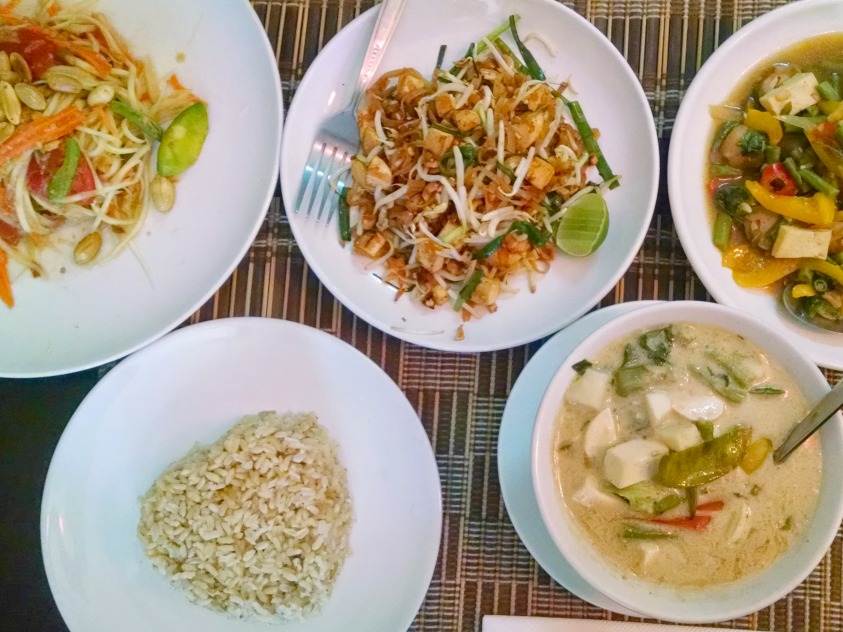
6. Appearance Matters
Just as important as the way a dish tastes is its appearance. Throughout the class Golf would say, "we add this for the color" or "we cut it this way for the way it looks".
This isn't a totally foreign concept but I was surprised about the emphasis he put on it. Usually when I make something I think primarily in terms of how something will taste or the texture an ingredient will add, not necessarily adding something just for aesthetic reasons, but we do all want our food to look good too!
It is an interesting point of view to cook from, especially when making food for other people. Eating is a multi-sensory experience and getting to enjoy the appearance of the food can be an important element of the overall experience.
I might experiment with keeping this point of view in mind more throughout the cooking process rather than just at the end when it comes time to decide how to plate or present a dish.
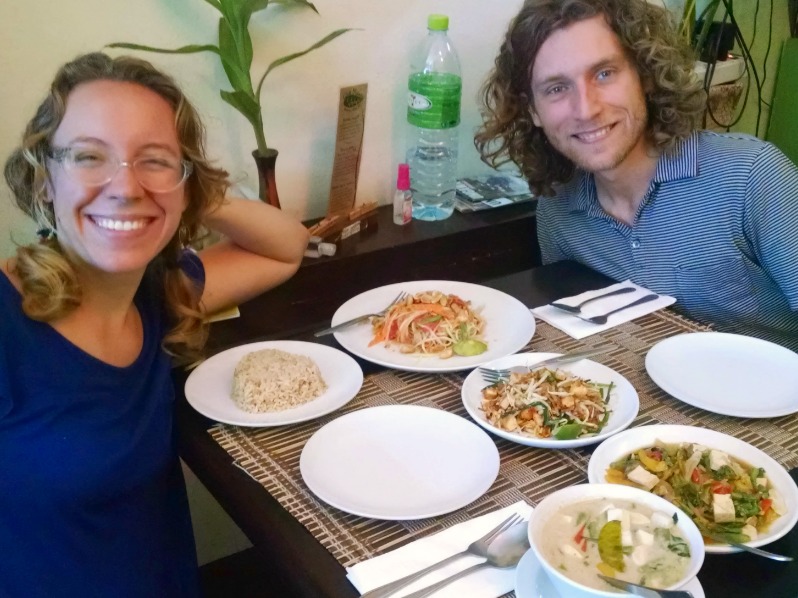
I really enjoy taking cooking classes now. It’s not something I did much when I was first learning my way around the kitchen, but now I always seem to leave with more takeaways than just the recipes themselves.
One of the things I love most about food is that because we all need it everyday, and everyone does things differently, there is always something new to learn.
